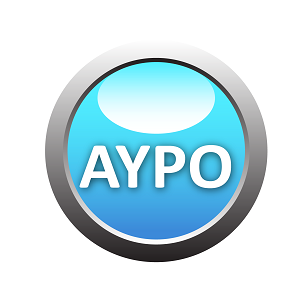Oregon 8 Hour Initial LTC Continuing Education Course
-
8 Hour Course
- $27.00
This eight-hour course applies to producers who need to earn their initial certification in order to transact long-term care (LTC) insurance. This course will cover key principles and concepts related to long-term care insurance coverage and will discuss a number of important issues surrounding long-term care, including an introduction to the history and concepts related to LTC, what long-term care insurance is and its associated uses, levels of care, eligibility for coverage, settings for care, the Activities of Daily Living, alternatives such as Medicare, Medigap and Medicare Advantage plans, and Medicaid.
The course continues with a deep look at long-term care policies, including the basics and in-depth material. Elimination periods, general underwriting, benefit periods, tax issues and tax-qualified contracts, agent and insurer responsibilities, replacement concerns, optional
benefits and riders are thoroughly explored. The last sections of the course detail the National Association of Insurance Commissioners Long-Term Care Model Act and its requirements.
The course concludes with a final exam that must be successfully passed in order to receive certification for the course.
Specifically, the course explores:
- The history of long-term care coverage, the current state of affairs and statistics related to purchasers and coverage, and the premium costs;
- What long-term care insurance really is, levels of care such as skilled care and unskilled care, home health and community care, and alternative care methods, like assisted living facilities, retirement complexes, adult daycare, group homes, respite care, the PACE program, and more;
- The Activities of Daily Living (ADLs), cognitive impairment issues, settings for care including potential costs, corresponding facilities including private versus semi-private care, dementia facilities, adult family homes, nursing homes, and regional differences in the mix of care;
- Who pays for long-term care, Medicare and Medigaps are explored as well as Medicare Part C Advantage plans and how these plans may be related to long-term care coverage, how Medicare Part D, the Prescription Drug plan, may fit into long-term care;
- The long-term care policy: the basics of the contract, important terms and definitions associated with coverage, an in-depth dive into the ADLs and Instrumental Activities of Daily Living (the IADLs) and how they may trigger benefits;
- Underwriting the policy, including personal and family health history, gender, age and current health status, who should and who should not buy long-term care insurance, the extension of benefits provision is detailed, as well as benefit periods and amounts of coverage;
- Tax concerns associated with tax-qualified long-term care (TQLTC) and non-qualified policies, general provisions, nonforfeiture concerns, long-term care partnership programs and their associated requirements, private long-term care, and inflation protection options and issues;
- The agent’s responsibilities in transacting LTC, suitability concerns and mandates, protections against unintentional lapse of the policy, exclusions found in LTC policies, a deep discussion on replacement concers, and marketing and advertising information;
- Optional benefits are analyzed, including riders and optional provisions, such as guarantee of insurability, waiver of premium, inflation protections, cost of living adjustments, spousal and survivorship benefit riders, and hybrid, or linked-benefit contracts;
- The NAICs Model Act MDL-641 and the changes and additions to the original Model Act MDL-640, including all sections of the act. This in-depth part of the course details the fine points of the act, and addresses:
- The regulation and its topics;
- Its purpose and authority;
- The application and scope of the act;
- General definitions used in the regulation and specific policy definitions;
- Policy practices and provisions, limitations and exclusions, continuation and conversion, discontinuance and replacement, premiums charged to an insured;
- Electronic enrollment for group policies;
- Unintentional lapse and protections required, nonpayment of premium and reinstatement, benefit triggers, required disclosures of rating practices to consumers, insurer filing requirements, and post-claims underwriting;
- Minimum standards for home health and community care benefits and the requirement to offer inflation protection;
- Application and replacement form requirements and associated notices, reporting requirements, licensing, the discretionary powers of commissioners, reserves, and loss ratios;
- Premium rate increases, advertising and marketing standards, suitability standards, prohibitions against preexisting conditions and probationary periods in replacement policies, and the availability of new services and providers;
- The right to reduce coverage and lower premiums, NAIC nonforfeiture requirements, issue ages, and premium increases, standards for benefit triggers for nonqualified and tax-qualified LTC contracts, and appealing an insurer’s determination that benefit triggers are not met, and independent reviews;
- The prompt payment of clean claims, standard formats for outlines of coverage the requirement to deliver a shopper’s guide, penalties associated with transgressions and violations, and permitted compensation arrangements; and
- The appendices that are related to long-term care that must be included or attached to long-term care coverage.
Show Course ID: 0
- Approved By: Oregon Insurance Division
Instructor Bio

Gary Sternberg is a veteran of insurance training, having been in the insurance education industry for over 25 years. He is a highly focused, licensed professional with top-level skills in prelicense and continuing education content authorship and training. He is well-versed in compliance and has extensive experience with state and federal regulatory laws and rules. Gary brings to At Your Pace Online students his excellent teaching, writing, and presentation skills with the ability to turn the complex into learnable “normal” person material. Most importantly, Gary has a passion for insurance education and seeing students successfully navigate the licensing process.

